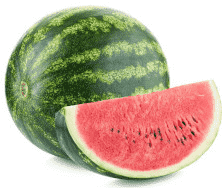Information report for Cla006289
Gene Details
Functional Annotation
- Refseq: XP_008450443.1 — PREDICTED: transcription factor bHLH122 isoform X1
- Refseq: XP_008450444.1 — PREDICTED: transcription factor bHLH122 isoform X1
- Refseq: XP_016900867.1 — PREDICTED: transcription factor bHLH122 isoform X1
- TrEMBL: A0A1S4DY09 — A0A1S4DY09_CUCME; transcription factor bHLH122 isoform X1
- STRING: XP_008450443.1 — (Cucumis melo)
- GO:0010119 — Biological Process — regulation of stomatal movement
- GO:0042335 — Biological Process — cuticle development
- GO:0048573 — Biological Process — photoperiodism, flowering
- GO:0005634 — Cellular Component — nucleus
- GO:0003700 — Molecular Function — transcription factor activity, sequence-specific DNA binding
- GO:0046983 — Molecular Function — protein dimerization activity
Family Introduction
- The basic/helix-loop-helix (bHLH) proteins are a superfamily of transcription factors that have been well characterized in nonplant eukaryotes, especially in mammalian systems, in which considerable structural, functional, and phylogenetic analyses have been performed. The data indicate that bHLH proteins are important regulatory components in transcriptional networks in these systems, controlling a diversity of processes from cell proliferation to cell lineage establishment.
- This family is defined by the bHLH signature domain, which consists of 60 amino acids with two functionally distinct regions. The basic region, located at the N-terminal end of the domain, is involved in DNA binding and consists of 15 amino acids with a high number of basic residues. The HLH region, at the C-terminal end, functions as a dimerization domain and is constituted mainly of hydrophobic residues that form two amphipathic -helices separated by a loop region of variable sequence and length. Outside of the conserved bHLH domain, these proteins exhibit considerable sequence divergence. Cocrystal structural analysis has shown that the interaction between the HLH regions of two separate polypeptides leads to the formation of homodimers and/or heterodimers and that the basic region of each partner binds to half of the DNA recognition sequence. Some bHLH proteins form homodimers or restrict their heterodimerization activity to closely related members of the family. On the other hand, some can form heterodimers with one or several different partners.
- The core DNA sequence motif recognized by the bHLH proteins is a consensus hexanucleotide sequence known as the E-box (5’-CANNTG-3’). There are different types of E-boxes, depending on the identity of the two central bases. One of the most common is the palindromic G-box (5’-CACGTG-3’). Certain conserved amino acids within the basic region of the protein provide recognition of the core consensus site, whereas other residues in the domain dictate specificity for a given type of E-box . In addition, flanking nucleotides outside of the hexanucleotide core have been shown to play a role in binding specificity, and there is evidence that a loop residue in the protein plays a role in DNA binding through elements that lie outside of the core recognition sequence.
Literature and News
Gene Resources
Sequences
CDS Sequence:
- >Cla006289|Citrullus_lanatus|bHLH|Cla006289
ATGGAGGCAGATTTTCAGCAGCGTCATCATATTCTTCATGAACACCATCAGCAACAACCGCAGATGAATTCTGGCTTGACACGCTACCGTTCTGCTCCGAGTTCGTATTTCAGAAGCCTGACGGATAGGGAATTCTGCGATCAGTTCTTCAATCGGCCATCCAGCCCTGAAACAGAAAGGATTTTTGCACGGTTTATGACAAGCGGGAGCGCCGGTGGTGGCGGCGGCGACCCAGAAGGTTCATCTCAGAACCTCGACGAGTCTCAGAAGGCCGGAGAAATGCTTTTAACCACTGAAGCAAATCAACAAACACCTTATGTGAGTAATGAAACAAGAGCTATCCATCAGCCGCCAAGCAATGTCAACAGCAATTACCCACCTGTTTCATCAACACCAAGTTTCTATCAGAGTTCAATGAAACCCCCACTTCCAAATCAGGGTATGATTTCAGGGACGGATGGATCTGGTTCAATGGGAATTGATCTAAAGCCAAGGATAAGAACAGATGGTGGAAGAACTTCGAATCTCATTCGACAAAGTAGCTCGCCTGCTGGGCTATTCGACCACATAAAGATTAATGATAGTGGCTATGCTGCATTGAGAAGCATGGGAAATTGTGGAACTCGTAGTAGTTTTAATGAAGAAGCCTCTTTTTCTTCTCCAAGCAGGTTGAAAAATTTCTCACCAAGGAACTTACCACCACACTCATCAGGGTTGATGAGTCCCATGGTTGGAATTGAGAAAAAAAGTATCAGAGAAACCAATCAAGATACTAAAAGCTTTGCCGAAAGCCAAACCAGTGATTATGGTAGTACTAGCTTCCCAGTTGGTTCTTGGGAAGAATCTGCTGTCATGTCTGATAACGTTGTTGGTCAAAAACCACTTGAAGATAACGATGACGATGAGAAATCATACTCGAATTTTAACATTTCAGACACTCAGAAGGTGGATCCCGGAAATCGCCCTCCCTTGCTTGCTCATCATCTTAGTTTGCCAAATACTTCAGCAGAAATGAATGCTATTGAAAAGATCTTGCAGTTTTCAGATTCTGTTCCTTGTAAACTCCGAGCCAAGCGTGGCTGTGCTACTCATCCCAGAAGCATTGCGGAGAGAGTCAGACGAACTAAAATAAGTGAAAGAATGAGGAAGCTTCAAGAGCTAGTCCCCAACATGGACAAGCAAACCAACACATCAGACATGTTAGATTTGGCAGTTGAGTACATAAAAGGCCTTCAGAAACAGGTTCAGATAATCGTGCAAAATGTAAGTGCTCACATAGTCAGCATCAATAATGAAAACGGGATTGGCGTGGAAATTCTTGTGTACAGAGCCATACCAATTTGA
Protein Sequence:
- >Cla006289|Citrullus_lanatus|bHLH|Cla006289
MEADFQQRHHILHEHHQQQPQMNSGLTRYRSAPSSYFRSLTDREFCDQFFNRPSSPETERIFARFMTSGSAGGGGGDPEGSSQNLDESQKAGEMLLTTEANQQTPYVSNETRAIHQPPSNVNSNYPPVSSTPSFYQSSMKPPLPNQGMISGTDGSGSMGIDLKPRIRTDGGRTSNLIRQSSSPAGLFDHIKINDSGYAALRSMGNCGTRSSFNEEASFSSPSRLKNFSPRNLPPHSSGLMSPMVGIEKKSIRETNQDTKSFAESQTSDYGSTSFPVGSWEESAVMSDNVVGQKPLEDNDDDEKSYSNFNISDTQKVDPGNRPPLLAHHLSLPNTSAEMNAIEKILQFSDSVPCKLRAKRGCATHPRSIAERVRRTKISERMRKLQELVPNMDKQTNTSDMLDLAVEYIKGLQKQVQIIVQNVSAHIVSINNENGIGVEILVYRAIPI
